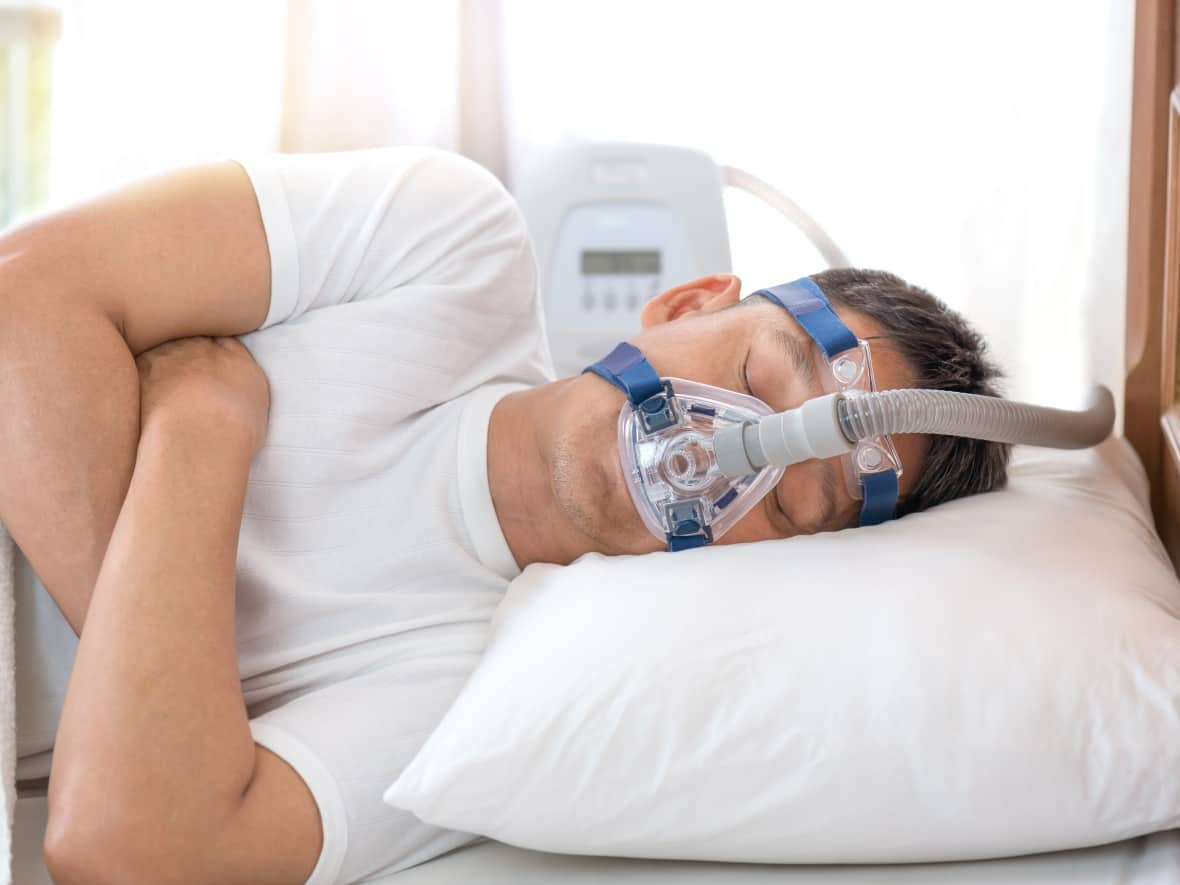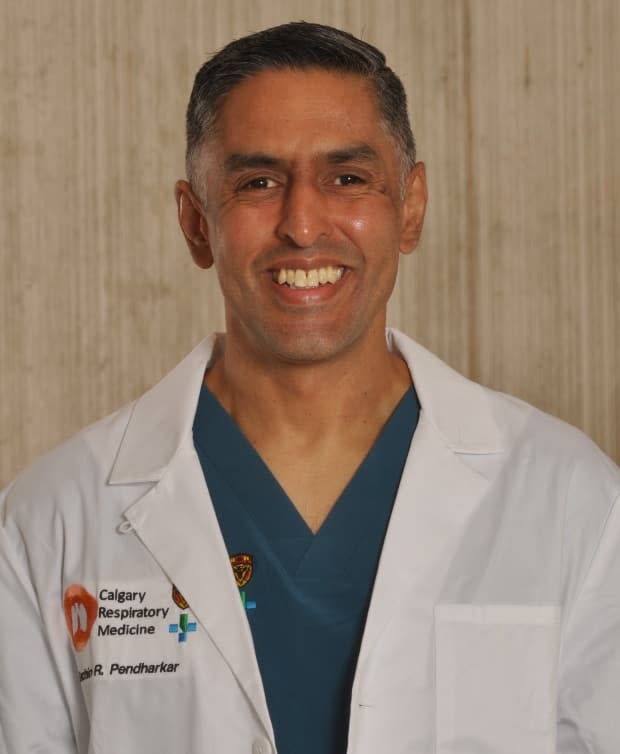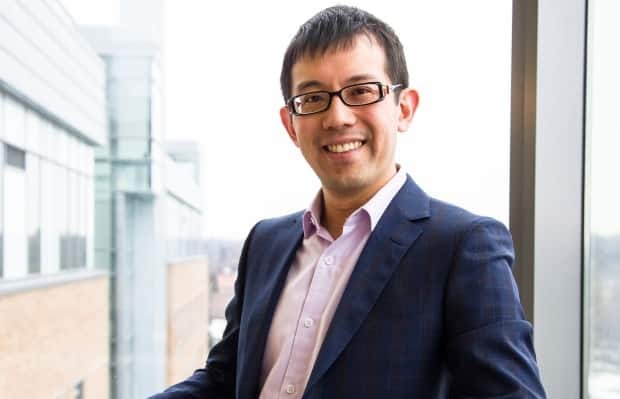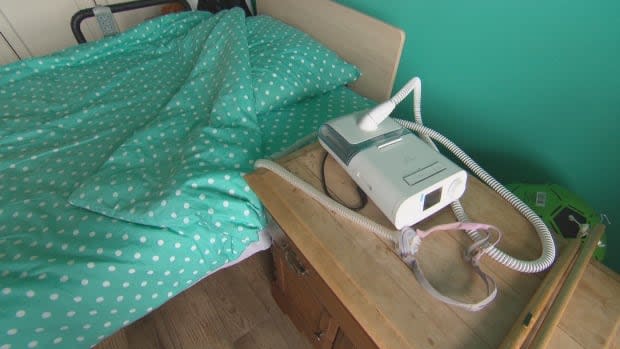Millions of people in Canada have sleep apnea. The problem is not all of them realize it

Krista Biddiscombe never thought she lived with sleep apnea.
Biddiscombe, 58, spent more than a decade unable to sleep, consulting with family doctors across two provinces who misdiagnosed her symptoms as perimenopause. Working in a high-stress policy role for the federal government, she was prescribed sleeping pills and muscle relaxants that improved her sleep, but they didn't cure her condition.
Finally, in 2023, after Biddiscombe relocated to Alberta, she consulted with a doctor who suggested that she might have sleep apnea.
She now uses a continuous positive airway pressure (CPAP) device to sleep, and says sleep is "a whole other world."
"When I fall asleep, I stay asleep," she said.
While there are millions of Canadians with the same condition, disrupting sleep and increasing the risk of other health problems, many don't know it, doctors say. Sleep apnea is treatable, but the cost and access can vary a lot across Canada.
What is sleep apnea?
There are two main kinds of sleep apnea: obstructive sleep apnea and central sleep apnea.
Obstructive sleep apnea is the most common. People living with the condition experience a collapse of their upper airway during sleep, which leads to "recurrent interruptions in breathing," according Dr. Sachin Pendharkar, a sleep and respiratory physician-scientist.
He described it as a "mechanical problem."
"What is normally a nice open airway, like a pipe that we can breathe through, starts to narrow progressively as those muscles relax," Pendharkar told The Dose host Dr. Brian Goldman.

Central sleep apnea, on the other hand, is a "signal problem," in which the brain fails to accurately send breathing signals while people are asleep, Pendharkar said.
Sleep apnea tends to affect men more than women, but roughly 5.4 million Canadians living with the condition. According to Pendharkar, who is also medical director of the Foothills Medical Centre Sleep Centre in Calgary, an additional 80 per cent of people living with sleep apnea are undiagnosed
What are the symptoms of sleep apnea?
People living with sleep apnea often report normal levels of sleep and are usually able to stay asleep throughout the night.
But they wake up feeling as though they haven't rested at all.
"It sort of carries over into the day," Pendharkar said. "They're sleepy during the day, they might have difficulty with concentration or alertness."
WATCH | Many people don't know they have sleep apnea:
Snoring is also a common sleep apnea symptom. But it can be difficult for people without bed partners to know whether they snore.
If left untreated, sleep apnea can lead to a host of medical conditions, including heart disease, Type 2 diabetes and high blood pressure.
In some cases, untreated sleep apnea can also lead to neurological concerns, according to Dr. Andrew Lim, a neurologist at Sunnybrook Health Sciences Centre who specializes in sleep disorders.

In the long term, people have a higher risk of developing strokes, cognitive impairment and dementia, according to Lim, who is also an associate professor of neurology at the University of Toronto.
Biddiscombe's own undiagnosed sleep apnea led to mental health concerns, memory challenges, as well as other complications.
"At one point, I remember just sitting on my couch, and I can't describe it any other way, but it actually felt like my internal organs were rotting because I was so exhausted," she said.
How do you diagnose sleep apnea?
Plysomnography is the "gold standard" for diagnosing sleep apnea, according to Pendharkar.
"This is an in-laboratory, overnight sleep study where the patient goes into the lab," he said. "They're hooked up to a whole bunch of different pieces of equipment."
Machinery measures brainwaves, muscle activity, breathing and oxygen levels, among other metrics, while microphones also record the sounds that patients make during sleep.
However, in-lab testing isn't accessible everywhere.
WATCH | The effects of poor sleep:
"In some parts of Canada and actually other parts of the world, there are challenges for people to actually get access to a lab because there just aren't enough lab resources," Pendharkar said.
"And so over the last 20 or 30 years, there's been this emergence of what we call home sleep apnea testing."
Biddiscombe, who lives in Sherwood Park, Alta., wasn't offered an in-lab test. Instead, she relied on a take-home test.
"It's quite a gizmo," she said. "You have to tape this mask to your face, you have a microphone attached to your neck, you've got a [pulse oximeter] attached to you for oxygen levels … you have tape everywhere and then you're supposed to sleep."
Pendharkar says experts are looking for reductions in overall airflow, dips in oxygen, changes in blood oxygen, as well as snoring.
"That's the same whether you're doing the home test or the laboratory test," he said.
Testing costs vary depending on whether the study is conducted in-lab or at-home. Full, in-lab sleep studies are covered by several provincial health-care plans, but home tests are sometimes paid by patients out of pocket. In Biddiscombe's case, her take-home test was free.
How can you treat sleep apnea?
After her at-home sleep study confirmed her sleep apnea diagnosis, Biddiscombe purchased a CPAP machine for roughly $2,400 to aid her breathing during sleep.
Pendharkar says CPAP machines are the "first-line, gold standard" treatments for sleep apnea.
"Essentially what that is is a little box that sits on the bedside table, connected to tubing, connected to a mask that fits either over the nose or over the mouth and nose," he said. "The box blows pressurized air through the mask and essentially blows air into the airway to hold it open, to prevent it from collapsing."
CPAP users can adjust the amount of pressure to the amount required to hold open their airways.
Some people living with mild to moderate sleep apnea can also benefit from a mandibular advancement device — a kind of dental appliance that pulls the lower jaw forward to improve breathing.
"Those are actually very good treatments for reducing not only the number of these respiratory events that are happening, but also improving sleepiness and quality of life," said Pendharkar
Pendharkar acknowledges that some patients have a hard time adjusting to sleeping with a CPAP mask.
Biddiscombe started off with a mask that covered her nose, which quickly proved uncomfortable.
"My nose was so sore, it wasn't even funny," she said. "I spent the entire day making sure it was constantly covered with Vaseline. It was horrible."
Despite the discomfort, however, her CPAP machine worked.
"I was actually able to finally sleep," Biddiscombe said.
Pendharkar recommends consulting with a health-care professional before purchasing a CPAP machine.
It's also worth noting that both the U.S. Food and Drug Administration and Health Canada have been informed of a recall of certain models of Philips CPAP machines due to health risks.
Equal sleep apnea treatment remains out of reach
Pendharkar has researched the cost of sleep apnea treatment across Canada. Ontario, Saskatchewan and Manitoba are currently the only provinces that fund CPAP treatments through government programs, he said.
"Everywhere else in the country, there are programs for people who have very low incomes, but otherwise people are paying out of pocket through private insurance," he said.
"Which is too bad, because I think that really limits access."
Biddiscombe hopes that additional regulation can equalize the cost of CPAP machines — across the country.
"I don't understand why somebody in Ontario can buy the exact same machine as me for $800, and I'm in Alberta paying $2,400," she said.
Even with the device, she says she still doesn't sleep the full seven to nine hours recommended by physicians.

"I think it's just life and work and other stressors that come in your life when you're at the age I'm at," she said.
Since getting diagnoses and beginning to use a CPAP machine, however, she says she's had a noticeable improvement in her health and wellness.
"I have more energy, I have more cognitive abilities than what I had before, I can actually concentrate," she said.
She hopes women – especially those experiencing perimenopause – learn from her overall experiences navigating the medical system.

